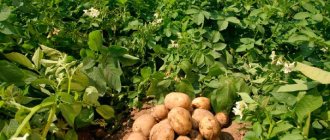The essence of business
Essential oils are used in various fields - from aromatherapy to marketing. Today they are indispensable in medicine, perfumery, and cosmetology. They are used in confectionery production and for the manufacture of other food products. In 2020, sales of essential oils in Russia amounted to 754.8 tons. There are few enterprises that produce essential oils, and the market is far from saturated. The reason is the high percentage of labor intensity, but the cost of production is very high.
The main difficulty lies not in choosing equipment and organizing sales markets, but in finding raw materials, most of which are imported from other countries.
Production technology
There are about 3000 species of essential oil plants. Essential oils are produced in various ways.
- Water distillation
This technology for the production of essential oils is focused on the transformation of volatile fractions of the raw materials used through special filters along a coil using steam. It is important to set the correct temperature, as excessive steaming will reduce the quality of the final product.
Enfleurage (extraction)
The method is based on obtaining essential oil products from plants, the elements of which were extracted by water distillation. They are placed on an absorbent (vegetable fats, shea or coconut butter) and covered with glass or silk plates. After the plates are saturated with all the components, the liquid is scraped off and goes through an extraction stage, as a result of which petroleum ether or alcohol is introduced, which takes away the valuable oil from the absorbent substance. The output is high-quality essential oil. Since some of the stages require manual labor, such oil is expensive - from 50-100 dollars per 10 grams.
Hydrodiffusion
This is a common extraction method using steam, which is directed at high pressure to the raw material, which is located on a special grid.
Cold pressing
This method is based on the use of tincture from the zest of fruits and plants. The zest goes through a spinning stage in a centrifuge. This is done to remove carbons, but it is impossible to completely get rid of them. Therefore, the oils obtained are of low quality.
Some essential oils must sit for months or even years to allow the carbons to evaporate. New manufacturing methods are also being used.
Making essential oils at home
Necessary equipment
To make essential oils at home, you will need a distiller and containers for storing the oil. You can buy a small distiller on the Internet or make it yourself from scrap materials - a pressure cooker, a glass tube, a saucepan and a separator. Of course, if you plan to produce oil for sale in large volumes, it is better to purchase a distiller from a trusted manufacturer. The cost of such equipment can be from 10 thousand rubles.
Technology for producing essential oils at home
The production of oils at home can be divided into two main stages - preparation of raw materials and obtaining essential oil.
Preparation of raw materials
If you do not purchase plants, but grow them yourself, you need to correctly determine the time of harvest. It will depend on the type of plant. Lavender, for example, is best cut when about half the flowers have bloomed. Rosemary, on the other hand, should be harvested when all the flowers have bloomed. Plants should be collected carefully so as not to damage the organs containing essential oil. Even when purchasing plants, you should pay attention to their quality. If the seller uses herbicides on flowers or herbs, this will directly affect the properties of the final product.
After collection, the raw materials must be thoroughly dried (this is not a mandatory procedure, but many still do it). For each type of herbs or flowers, a separate drying method is used, however, there is a universal rule - the raw materials should never be overheated, i.e. Place in direct sunlight. Moreover, if you dry in a dark room, you can significantly reduce the loss of essential oil.
Oil extraction
The technology for extracting oil from plants at home includes the following steps:
- Using a distiller. If you are using a purchased device, carefully follow the manufacturer's instructions. Fill the distiller only with clean, preferably filtered water. As a rule, this procedure takes from half an hour to 6 hours or more - everything will depend on the type of plant and essential oil. It is necessary to add raw materials to the distiller, carefully ensuring that the layer does not block the hole through which the steam escapes (the distance between the hole and the layer of raw materials should be about 5 centimeters). Next, you need to bring the water to a boil, closing the lid - this will allow steam to escape only through a special pipe. Throughout the entire procedure, make sure that the device does not run out of water.
- Filtration. This procedure is not mandatory, but many still pass the oil obtained in the distiller through ordinary, clean gauze.
- Storage. Essential oils are stored in separate containers for several years - some experts believe that the oil only gets better over the years. To prevent the product from spoiling ahead of time, it should be stored in dark glass bottles or stainless steel containers in a dark, cool room.
It should be emphasized that all essential oils are concentrates and are often diluted with other oils, also known as “carrier” oils. The most commonly used oils are almond or grape oil - they can be added both at the bottling stage and before use.
Raw materials
Products are obtained from plants - herbs, shrubs, trees, both from the whole plant and individual parts (leaves, buds, roots, grains, etc.). They have different requirements. Some must be dried, while others, on the contrary, must be fresh, and collected on a certain day and even time. However, the oil content in the plant itself may vary. For example, 100 kilograms of eucalyptus leaves contain 300 kilograms of oil, 100 kilograms of commiphora resin contain no more than 400 grams.
All large enterprises, even when engaged in their own production of essential oils in Russia, are forced to purchase raw materials for their assortment in other countries (what is not grown in the Russian Federation). And they sell a finished product.
To store products, for example, lavender or neroli oils, use glass containers with brown glasses that do not transmit ultraviolet radiation by 50%. Such bottles cost 80-100 rubles apiece, which increases the cost of the product. It is not recommended to store liquid in containers larger than 10 liters. Cheaper aromatic oils are stored in slightly darkened containers with thin walls, which are additionally packed in cardboard boxes.
Pharmacokinetics of essential oils
There are three forms of aroma absorption by the cell: simple diffusion, when, due to its tiny molecular weight, the substance penetrates through the cell membrane sieves along a concentration gradient (for example, monoterpenes, ketones, alcohols, coumarins, cytokinins); active diffusion - through the lipid phase of cells, when the phospholipid components of the membrane complex become biological emulsifiers of aromatic hydrocarbons (ethers and esters, alcohols, fatty acids); translocation is the ability of aromatic substances to create temporary coalitions with lipoproteins of the cytoplasmic membrane. Lipoproteins temporarily become carriers (translocators) of aromatic hydrocarbons, binding the drug on one side of the membrane and releasing it on the other. This path is typical for relatively large aromatic compounds (polyphenols, bicyclic and tricyclic alcohols, etc.). It cannot be called “penetration”, rather an “invitation” carried out by the hostess herself - the cell, which, experiencing certain difficulties, specially “exhibits” “catchers” and guides throughout the entire area of its shell, obliged to catch and lead the substance it requires inside.
The rate of transfer of aromatic hydrocarbons (diffusion rate) depends on the size and lipophilicity of the drug molecule; on the viscosity and thickness of the cell membrane; on the area of the contact surface; body temperature and the temperature of the substance itself. Thus, heat and emulsifying substances (vegetable oils) increase the rate of penetration of essential oil components through the skin.
Distribution: Once in the body, aromatic hydrocarbons are transported by the entire carrier system (plasma, interstitial, intracellular, extracellular fluid). Passing through capillary beds, some molecules are included in the processes of filtration, passive diffusion and active transport, penetrating through the biological membranes of tissue cells located along their movement. Once in the “atmosphere” of plasma proteins, aromatic hydrocarbons (like classical provitamins) enter into van der Wals bonds with biological carriers (lysine-histidine-cysteine groups, albumins, lipoproteins, alpha-glycoproteins, globulins), which transport them to place of shortage. One of the fundamental properties of essential oils is based on the same principle - counteracting coagulation and denaturation of the body’s protein structures (cleansing, anti-sclerotic, rejuvenating, immunostimulating).
Efficacy: a soft, gradual, cumulative effect, characteristic of the action of all essential oils, is ensured by the processes of cumulation and deficiency therapy. As deficient substances and processes are replenished, the coefficient of presystemic biotransformation decreases. During the course of aromatherapy, dosages are usually reduced.
Excretion (release) of aromatic substances occurs in full (up to 95% of the dose) through metabolic clearance (transformation and use of drug components by cells and tissues). The remaining five percent, which we take to be 100% excreted by the body, is excreted through the pulmonary system and skin (about 70–95%), the rest is excreted through the intestines and kidneys. Accordingly, aromatherapy guarantees minimal stress on the excretory systems, which naturally prevents the exacerbation of chronic diseases of the kidneys and gastrointestinal tract.
Equipment
The manufacturing conditions, the organization of the premises and the set of equipment depend on the type of essential oil raw materials that are planned to be used. A set of used equipment, which will allow you to produce up to 50 kilograms of products per day, costs from 25 thousand dollars. For a new one you need from 60 thousand dollars. The market also offers mini-electric equipment with a capacity of 10 kW for the production of hydrosols and essential oils, costing from 345,000 rubles, but such installations do not make it possible to build a full-fledged business.
The set of equipment for the production of essential oils is a modular apparatus mounted on frame structures. It consists of:
- distillers;
- heat exchanger;
- pump;
- steam generator;
- control panel.
Documentation
In addition to registering with government agencies and choosing a taxation regime, it is necessary to obtain permits to conduct activities from other authorities - SES, fire service. The fire inspectorate will check especially carefully, since it is planned to work with highly flammable materials. Any aromatic oils, regardless of the production method, must have a Certificate of State Registration
To confirm quality, it is necessary to obtain permits:
- declaration of conformity GOST R;
- voluntary certificate for essential oil products;
- sanitary and epidemiological conclusion.
Financial plan
The amount of starting capital depends on the production method and the type of essential oils that are planned to be produced. You can choose a narrow segment and produce several types of oils, the raw materials of which are grown in our country - pine, fir, chamomile, mint, sea buckthorn, etc.
But manufacturing companies import most of their raw materials (sandalwood, citrus fruits, jasmine, cardamom, cloves). They independently grow various crops for further production.
If you organize a small workshop with used equipment, the start-up costs will be:
- preparation of a warehouse and work area, rent for the first month - 150 - 200 thousand rubles;
- purchase of a production line, commissioning works - 1.5-1.7 million rubles;
- hiring staff (5 workers) – 100-150 thousand rubles;
- registration of permits – 30-50 thousand rubles;
- payment of tax, utility costs, marketing and outsourcing costs - 50-80 thousand rubles.
You can sell essential oils either on your own or enter into a contract with manufacturers of cosmetics, medicines, food, perfumes, household chemicals, and so on. To form a customer base, it is necessary to establish the production of popular types - mint, camphor, clove, citrus and other types of oils. Since their costs are radically different, it is difficult to calculate the possible income. For example, to obtain 1 liter of jasmine oil you need 750 kilograms of flowers, so it is very expensive - 350-700 rubles per 5 ml. Cheaper types - aromatic oils of fir, mint, pine, lemon, eucalyptus cost about 18-30 rubles. per bottle is 5 ml., but the raw materials for their production are much cheaper.
As a rule, production pays for itself in 1.5-2 years. Monthly costs include labor, taxes and utility bills, rent of premises and warehouse, purchase of raw materials and storage containers. The average net profit of manufacturing enterprises varies between 80-200 thousand rubles, depending on the product range and technology. Large companies increase earnings several times more, but more production capacity is used.
Essential oils: subtleties of production
Olga Petrashchuk, candidate of biological sciences, teacher at the MegaSPA international school.
The essential oil flora includes more than 2000 plant species, of which about 1000 grow in our country, but only 150-200 species are of industrial importance. Most essential oils are obtained from tropical or subtropical plants, and only a few (coriander, anise, mint, etc.) are cultivated in more temperate latitudes (organic or conventional cultivation). Particularly rich in oils are numerous species of the family Lamiaceae (mint, lavender, sage, basil, patchouli, etc.), Umbellaceae (anise, fennel, cumin, coriander, ajgon, etc.), Rosaceae (essential oil rose), Geranium family (rose geranium); amaryllis (tuberose), myrtle (lemon eucalyptus), etc.
Unlike vegetable oils, essential oils are multicomponent mixtures of volatile organic compounds (aromatic, alicyclic and aliphatic carbonyl compounds, alcohols, acids, esters, etc.) produced in special cells of various plants and responsible for their smell. Essential oils in a free state or in the form of glycosides are found in leaves, stems, roots, seeds, fruits, bark and wood. The content of oils in plants varies widely: for example, rose flowers contain 0.02-0.10%, and clove buds contain 20-22%, but the largest amount accumulates in most plants during flowering and seed ripening.
Oils are named, as a rule, according to the type of plant from which they are obtained (rose, geranium, lavender), less often - according to the main component (camphor, eugenol, turpentine).
Raw materials for extracting oils are used either raw (green mass of geranium, lavender flowers, etc.), dried (mint), dried (calamus roots, iris, etc.), or pre-fermented (rose flowers, oak moss). Plants such as bitter almonds, cucumber, horseradish or mustard contain aromatic substances in bound form. To release them, it is necessary to destroy the cellular structure of these plants and only then extract the aromatic substances.
Isolation of essential oils from plants
In the 11th century, Avicenna described the method of obtaining essential oils by distillation, known to the Arabs from the 8th-9th centuries. Before this, ancient civilizations for many hundreds of years used extracts of fragrant flowers, herbs and roots infused in vegetable oils or in melted solid fats (maceration).
Nowadays, chemists use a wide range of methods to extract essential oils from plants. Depending on the form in which the essential oil is found in the plant (free and/or bound), different extraction methods are used or combinations of different methods are used. The free form makes it possible to extract essential oils by steam distillation, air blowing, pressing or solvent extraction (volatile and non-volatile). Extracting bound forms of essential oils requires prior release of the essential oil through fermentation (enzymatic hydrolysis).
Fermentation involves keeping the raw material from several hours to a day at a temperature of 50-600C. Due to the breakdown of glycosides under the action of the plant’s own enzymes, a significant amount of essential oils is formed, which can be extracted using various methods. A type of fermentation can be long-term storage (2-3 years) of orris roots in dry conditions, after which the necessary aromatic components accumulate in them. After fermentation, essential oils are distilled off as free form. Hydrolytic processes can also occur during steam stripping. In some cases, before steam distillation, the raw materials are kept in salt solutions with a concentration of 5-20%. In this case, essential oil is released from plant cells as a result of the so-called osmotic shock, that is, the destruction of cells under the influence of salt.
Preparation of essential oils by steam distillation
Steam distillation is used most often when the plant contains quite a lot of essential oils. In addition, in some cases, only steam distillation makes it possible to obtain essential oils of a certain quality, for example, those containing azulenes (chamomile, yarrow). Steam distillation is carried out both by distilling a mixture of raw materials and water (hydrodistillation) and by directly exposing the raw materials to steam (steam distillation).
Hydrodistillation . The simplest option is to distill off the water in the presence of plant material. It is used quite rarely, for example, when obtaining rose oil. Used in laboratory conditions. Depending on the pressure, hydrodistillation is carried out at normal pressure (most often) or in a vacuum (vacuum hydrodistillation - stripping with steam at reduced pressure). There are proposals to carry out hydrodistillation at elevated pressure up to several atmospheres, which significantly improves the ratio of water and the substance distilled off with it in the distillate. The higher temperature required to boil water promotes faster distillation. The oil isolated in this way is slightly different from the oil isolated in the traditional way.
Steam distillation . The most economical and technologically convenient method of stripping is to use superheated steam (high pressure steam). At the same time, it is possible to avoid local overheating of the plant material that occurs during hydrodistillation and to drive away the highly volatile, often very valuable components of the essential oil. The predominant amount of commercial essential oil is obtained by this method.
The resulting steam carries with it the volatile components of the essential oil. Then, the steam is cooled with running water, and the liquid mixture of water and essential oil is separated in the receiver. The receiver design depends on the specific gravity of the oil. If the oil is lighter than water, it floats to the top and the water is removed through the side tube. If the oil is heavier, it collects at the bottom of the receiver, and excess water is drained through the hole in the upper part. Both designs are variations of the so-called Florentine flask. The oil obtained through steam distillation is called distillation oil.
Some essential oils are partially soluble in water and during distillation with steam, some of them are carried away in dissolved form with the distillation waters. Oils containing phenols and terpene alcohols have the greatest solubility, ethers have less solubility, and terpene hydrocarbons are practically insoluble. With the simultaneous content of both highly soluble and slightly soluble components, phenols and terpene alcohols are washed out from the resulting essential oil. If economically and technologically necessary, this part of the essential oil can be isolated and used. The separation of the soluble components of the essential oil from the distillate is called cobation. Typically, cobation essential oil is added to distillation oil to increase the overall yield. However, such a technological operation requires great care so as not to spoil the primary oil.
In some cases, the low yield of oil allows only aromatic water to be obtained from the plant through water distillation. Then it is used as a toilet. The water that remains from the distillation process is called hydrosol. Hydrosols contain a wide range of water-soluble components of essential oils. In addition to carboxylic acids, hydrosols contain a large amount of terpene and sesquiterpene alcohols, which makes it possible to use them as skin care products (rose, chamomile, St. John's wort, myrtle). Hydrosols are also an excellent source of valuable alcohols without the irritating effects of terpene hydrocarbons. However, chemical changes easily occur in hydrosols, as well as changes associated with the active actions of microorganisms. To preserve the composition of hydrosols, preservatives are added to them.
A number of essential oils can only be obtained by steam distillation (some types of chamomile and yarrow). The fact is that in a bound (non-volatile form) the plant contains substances belonging to the class of sesquiterpene lactones. When these lactones decompose as a result of hydrolysis with water vapor, an important class of essential oil components is formed - azulenes. These substances color essential oils deep blue and green and give them special physiologically active properties (anti-inflammatory, anti-burn).
Destructive distillation . Sometimes, to obtain essential oil, various wood materials (birch, juniper) are heated in a vacuum. In this case, the aroma components evaporate, part of the wood is destroyed and a number of phenolic compounds are formed, which give the resulting essential oil the smell of “dressed leather”. This essential oil has a number of healing properties; it is also used in perfumery in the manufacture of perfumes for men.
A special, very important class of aromatic plant secretions are balms. Balms are obtained from resinous secretions on the bark of some shrubs and trees. These secretions are formed at the site of natural (pests) or artificial (cuts or burns) damage to the surface of the bark. The released resin, initially liquid, hardens over time and turns into balsamic resins or balms. The composition of balms includes a certain amount of volatile substances (5-60%), the components of which have an odor and determine the aroma of the balms. By steam distilling balms, essential oils are obtained, which are of some value for perfumery.
Obtaining essential oils by extraction with volatile solvents
For many very important aromatic plants (rose, jasmine, mignonette, narcissus and jonquilla, violet, heliotrope, gillyflower, frankincense, hyacinth, lilac) steam distillation does not work at all or results in an oil completely unusable. In this case, extraction with volatile organic solvents is used. The solvents most often used are ethyl alcohol and purified petroleum ether. The use of other solvents (chloroform, ethyl ether, benzene) is often economically unprofitable, since these solvents are relatively expensive, and in addition, their use leads to the production of highly colored preparations.
The extraction process consists of two stages: actually extracting the components from the plant material and removing the solvent (often under reduced pressure). After being freed from the solvent, a dark-colored semi-liquid or solid mass is obtained, which is called “concrete”. Along with volatile aromatic compounds, it contains a lot of non-volatile components (paraffins, waxes, esters of higher fatty acids and resins). The content of essential oil in concrete is 5-20%. These essential oils are most often extracted from concrete with ethyl alcohol. To do this, the concrete is dissolved in alcohol. In this case, 20-60% of the concrete passes into the solution. Undissolved substances are filtered off under strong cooling to separate them from waxes, and the alcohol solution is decolorized with activated carbon and evaporated in vacuum. This produces absolute oil (“absolute”), which is extremely valuable in perfumery.
Liquefied gases (carbon dioxide and freons) are also used for extraction. They allow the process of extraction and production of the concrete to be carried out much more efficiently, but this requires a lot of preparatory work with the raw materials, which is often incompatible with maintaining its perfume quality. In the case of spicy and aromatic raw materials, the use of CO2 extraction is most promising. Extracts retain their bright aroma, taste and biologically valuable components inherent in plants (vitamins E, di- and triterpenes). They are sterile and have antioxidant properties. Conditions have been selected for isolating concentrates from fresh fruits (apples, pears, oranges), spices (black pepper, cloves, cinnamon) and aromatic plants (calamus, cardamom, marjoram). In addition to essential oil, the resulting extracts also contain a large amount (10-90%) of fatty oil. In some cases, this has a positive meaning, since the fatty part in combination with the aromatic component represents a good biologically active complex suitable for use in cosmetic products. This combination is unacceptable for use in perfume preparations, since the extracts must be dissolved in alcohol, while the fatty base, insoluble in alcohol, will precipitate.
Maceration and enfleurage . Varieties of the extraction method for extracting essential oils are the rather rare methods of maceration and enfleurage. These methods involve the absorption of volatile aromatic compounds from flowering plants with non-volatile solvents.
Maceration consists of immersing flower petals in bags for some time (up to 2 days) in animal fat or vegetable oil heated to 50-700, purified by a special method. After repeated (20-25 times) changes of raw materials, a sufficient amount of aromatic substances accumulates in the fat (oil).
Enfleurage involves the absorption of essential oils from flowers on special frames covered with a layer of fat or fabric soaked in vegetable oil. After 72 hours, the flowers are removed and replaced with new ones, repeating the process up to 30 times. The product obtained through the process of maceration and enfleurage is called flower lipstick (if the extraction was carried out with fat) or antique (fragrant) oil (if the extraction was carried out with vegetable oil). It is treated with alcohol to extract aromatic components and the resulting concentrate is used as high-quality perfume raw materials.
A modern and technologically advanced way to extract essential oils of some flowering plants (jasmine) is dynamic adsorption, that is, the absorption of aromatic substances by activated carbon or other solid adsorbents. To do this, flower petals are loaded into a chamber and blown through with humidified air. Air saturated with aromas is directed to an adsorber with activated carbon, where the carbon is saturated with essential oil. The coal is then washed with diethyl ether and the ether is evaporated. Most often, the resulting extract is added to an absolute obtained in the usual way from concrete. Sometimes, for a more complete extraction of essential oils after adsorption methods, the raw materials are subjected to steam distillation
Preparation of essential oils by pressing
In some cases (especially in the case of citrus fruits) it is possible and economically profitable to obtain oil by simply pressing the raw materials. To do this, the peel or whole fruits are pressed, and the resulting emulsion of essential oil in the juice is centrifuged. In this case, the oil appears on top and is separated.
The disadvantage of citrus oils obtained by pressing is the admixture of phototoxins they contain. These substances, when applied to the skin, activate sunlight, which leads to skin burns. To prevent this phenomenon, phototoxins are removed chemically. The resulting oil, tested on biological objects, is no longer toxic and safe for use.
After pressing, up to 30% of the essential oil remains in the raw material, which is separated by steam distillation. The additional distillation oil obtained has a worse aromatic quality, but is sufficient for use as a deodorant. Its good quality is that it does not contain phototoxins.
The ISO International Standards Organization defines essential oils as follows:
- 100% natural means that the oil essence does not contain any synthetic additives, emulsifying agents, mineral oils, etc.
- 100% pure - no other oil essences have been added to this product. If it is lavender oil, then no other types of lavender oil (such as lavandin) are added to it.
- 100% complete means that the oil essence has not been specially processed, terpenes have not been removed, or the oil essence has not been properly purified, etc.
The chemical composition of essential oil may vary. The amount of each component can vary widely even for one type of plant, which depends on the place where the plant is grown, the period of harvesting the raw materials and the stage of the growing season, the duration and conditions of storage of the raw materials, as well as the technology of its processing. This makes standardization of essential oils difficult. The International Organization for Standardization (ISO) has established a profile for each essential oil based on gas-liquid chromatography (reference) results, which allows the quality of the resulting essential oil to be assessed.
The high cost of essential oils often provokes their falsification. The most common methods of falsification:
- diluting essential oil with vegetable oil;
- diluting expensive essential oil with cheap one (for example, peppermint oil with mint oil);
- diluting one essential oil with the natural components of another (for example, lemon and orange terpenes);
- adding synthetic substances to the oil (for example, synthetic linalool to neroli oil).
When using essential oils in aromatherapy, many problems arise related to their safety. These problems are also associated with the peculiarities of the attitude towards essential oils as substances of natural origin. It is assumed that natural substances are completely compatible with the human body and cannot have any harmful effects. At the same time, they forget that they are found in nature in minute concentrations, and essential oils are highly concentrated mixtures of plant aromas. The degree of concentration in relation to their content in plants is 50-1000 times. If we talk about the content of essential oils in the air, the degree of concentration of essential oil components reaches several million times. Therefore, the use of essential oils when applied to the skin should be limited in most cases to dilute solutions, usually in ethyl alcohol or fats (vegetable oils). These essential oil solvents are called “carriers.” Solvents used to dilute essential oils must be chemically stable and free of foreign or unpleasant odors. Vegetable oils and waxes are used as natural carriers. The concentration of essential oils recommended in aromatherapy should not exceed 25%; in cosmetic preparations, 5-10% of essential oils are usually used: 1% for dry and sensitive skin; 2% for normal, oily and combination skin; 4% and above - in the form of a concentrate for a pronounced therapeutic effect on the skin.











